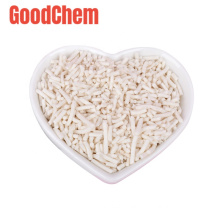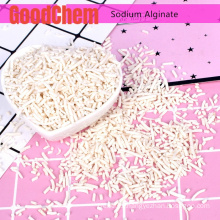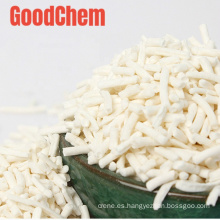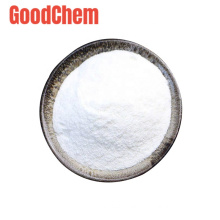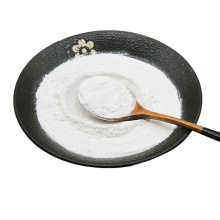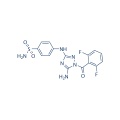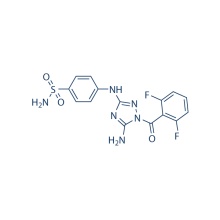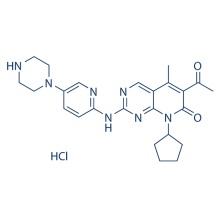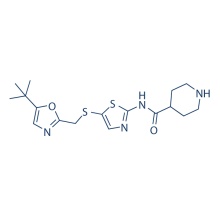.cp_wz tabla {borde superior: 1px sólido #ccc; borde izquierdo: 1px sólido #ccc; } .cp_wz table td {borde derecho: 1px sólido #ccc; borde inferior: 1px sólido #ccc; padding: 5px 0px 0px 5px;} .cp_wz table th {border-right: 1px solid #ccc; border-bottom: 1px solid #ccc; relleno: 5px 0px 0px 5px;} \ n Peso molecular: \ n 394.36 JNJ-7706621 es un inhibidor de pan-CDK con la potencia más alta en CDK1 / 2 con IC50 de 9 nM / 4 nM y que muestra una selectividad> 6 veces mayor para CDK1 / 2 que CDK3 / 4/6. También inhibe de forma potente Aurora A / B y no tiene actividad sobre Plk1 y Wee1. \ N Actividad biológica JNJ-7706621 también muestra cierta inhibición de VEGF-R2, FGF-R2 y GSK3β, con IC50 de 154-254 nM. JNJ-7706621 muestra un efecto inhibidor en un panel de tipos de células cancerosas humanas, incluidas HeLa, HCT-116, SK-OV-3, PC3, DU145, A375, MDA-MB-231, MES-SA y MES-SA / Dx5 , con IC50 de 112-514 nM, independiente del estado de p53, retinoblastoma o glicoproteína P. JNJ-7706621 es varias veces menos potente para inhibir el crecimiento de tipos de células normales, incluidas MRC-5, HASMC, HUVEC y HMVEC, con IC50 de 3,67-5,42 μM. En las células HeLa o U937, JNJ-7706621 (0.5-3 μM) retrasa la salida de G1, detiene las células en G2-M, induce la endorreduplicación, activa la apoptosis y reduce la formación de colonias. En una línea celular HeLa, el tratamiento incremental con concentraciones crecientes de JNJ-7706621 conduce a una resistencia de 16 veces, que puede estar mediada por ABCG2. En el modelo de xenoinjerto de ratón de tumor humano de melanoma A375, JNJ-7706621 (100 o 125 mg / kg) provoca la regresión del tumor. Protocolo (solo como referencia) Ensayo de quinasa: [1]
|
In vitro kinase assay for CDK1 and Aurora kinases
|
For CDK1 kinase activity, a method is developed using the CDK1/cyclin B complex purified from baculovirus to phosphorylate a biotinylated peptide substrate containing the consensus phosphorylation site for histone H1, which is phosphorylated in vivo by CDK1. Inhibition of CDK1 activity is measured by observing a reduced amount of 33P-γ-ATP incorporation into the immobilized substrate in streptavidin-coated 96-well scintillating microplates. CDK1 enzyme is diluted in 50 mM Tris-HCl (pH 8), 10 mM MgCl2, 0.1 mM Na3VO 4, 1 mM DTT, 1% DMSO, 0.25 μM peptide, 0.1 μCi per well 33P-γ-ATP, and 5 μM ATP in the presence or absence of various concentrations of JNJ-7706621 and incubated at 30 °C for 1 hour. The reaction is terminated by washing with PBS containing 100 mM EDTA and plates are counted in a scintillation counter. Linear regression analysis of the percent inhibition by JNJ-7706621 is used to determine IC50. The Aurora kinase assays are done with 10 μM ATP and a peptide containing a dual repeat of the kemptide phosphorylation motif.
|
Ensayo celular: [3]
|
Cell lines
|
HeLa, HCT-116, A375, SK-OV-3, MDA-MB-231, and PC-3 cells
|
|
Concentrations
|
1 nM - 10 μM, dissolved in DMSO
|
|
Incubation Time
|
48 hours
|
|
Method
|
The ability of JNJ-7706621 to inhibit the proliferation of cell growth is determined by measuring incorporation of 14C-labelled thymidine into newly synthesized DNA within the cells. Cells are trypsinized and counted and 3-8 × 103 cells are added to each well of a 96-well CytoStar tissue culture treated scintillating microplate in complete medium in a volume of 100 μL. Cells are incubated for 24 hours in complete medium at 37 °C in an atmosphere containing 5% CO2. Next, 1 μL of JNJ-7706621 is added to the wells of the plate. Cells are incubated for 24 more hours. Methyl 14C-thymidine 56 mCi/mmol is diluted in complete medium and 0.2 μCi/well is added to each well of the CytoStar plate in a volume of 20 μL. The plate is incubated for 24 hours at 37 °C in JNJ-7706621 plus 14C-thymidine. The contents of the plate are discarded and the plate is washed twice with 200 μL PBS. 200 μL of PBS is added to each well. The top of the plate is sealed with a transparent plate sealer and a white plate backing sealer is applied to the bottom of the plate. The degree of methyl 14C-thymidine incorporation is quantified on a Packard Top Count.
|
Estudio con animales: [1]
|
Animal Models
|
Mouse xenograft model of A375 cells
|
|
Formulation
|
Dissolved in 0.5% methylcellulose containing 0.1% polysorbate 80 in sterile water.
|
|
Dosages
|
100 or 125 mg/kg
|
|
Administration
|
Orally or by intraperitoneal injection injection
|
|
Solubility
|
0.5% methylcellulose/0.2% Tween 80,
14 mg/mL
|
|
* Please note that Selleck tests the solubility of all compounds in-house, and the actual solubility may differ slightly from published values. This is normal and is due to slight batch-to-batch variations.
|
Conversión de diferentes modelos de animales basados en BSA (valor basado en datos del Borrador de Directrices de la FDA)
|
Species
|
Baboon
|
Dog
|
Monkey
|
Rabbit
|
Guinea pig
|
Rat
|
Hamster
|
Mouse
|
|
Weight (kg)
|
12
|
10
|
3
|
1.8
|
0.4
|
0.15
|
0.08
|
0.02
|
|
Body Surface Area (m2)
|
0.6
|
0.5
|
0.24
|
0.15
|
0.05
|
0.025
|
0.02
|
0.007
|
|
Km factor
|
20
|
20
|
12
|
12
|
8
|
6
|
5
|
3
|
|
Animal A (mg/kg) = Animal B (mg/kg) multiplied by
|
Animal B Km
|
|
Animal A Km
|
Por ejemplo, para modificar la dosis de resveratrol utilizada para un ratón (22,4 mg / kg) a una dosis basada en el BSA para una rata, multiplique 22,4 mg / kg por el factor Km para un ratón y luego divida por el factor Km para una rata. Este cálculo da como resultado una dosis equivalente para ratas de resveratrol de 11,2 mg / kg.
|
Rat dose (mg/kg) = mouse dose (22.4 mg/kg) ×
|
mouse Km(3)
|
= 11.2 mg/kg
|
|
rat Km(6)
|
Información química
|
Molecular Weight (MW)
|
394.36
|
|
Formula
|
C15H12F2N6O3S
|
|
CAS No.
|
443797-96-4
|
|
Storage
|
3 years -20℃Powder
|
|
6 months-80℃in solvent (DMSO, water, etc.)
|
|
Synonyms
|
|
|
Solubility (25°C) *
|
In vitro
|
DMSO
|
79 mg/mL
(200.32 mM)
|
|
Water
|
<1 mg/mL
(
|
|
Ethanol
|
<1 mg/mL
(
|
|
In vivo
|
0.5% methylcellulose/0.2% Tween 80
|
14 mg/mL
|
* <1 mg/ml means slightly soluble or insoluble.
* Please note that Selleck tests the solubility of all compounds in-house, and the actual solubility may differ slightly from published values. This is normal and is due to slight batch-to-batch variations.
|
|
Chemical Name
|
4-[[5-amino-1-(2,6-difluorobenzoyl)-1H-1,2,4-triazol-3-yl]amino]-benzenesulfonamide
|
Calculadora de molaridad Calculadora de dilución Calculadora de peso molecular
Grupos de Producto : Ciclo celular > Inhibidor de CDK
